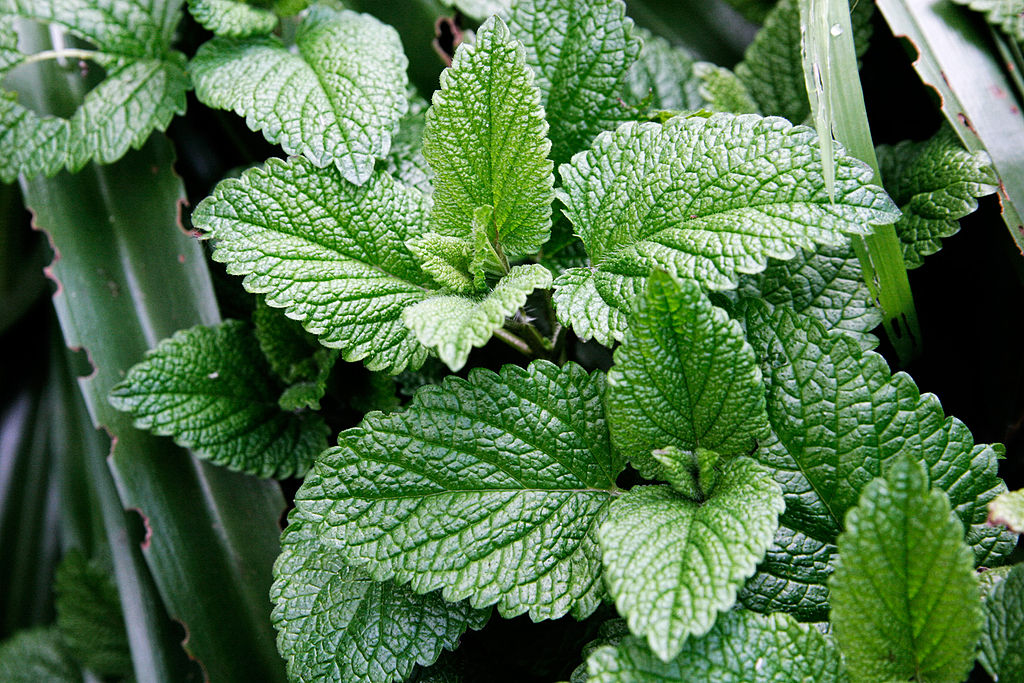Nutrition for Mint
Calories, Protein, Vitamins and More
Mint Nutrition Summary
One cup of mint (25.6 grams or 0.9 oz) contains 18 calories and 1 grams of protein. Mint consist of 79% water, 15% carbohydrates, 4% protein, and less than 1% of fat.Mint is an excellent source of many nutrients, including dietary fiber, Vitamin A, calcium and potassium. It also contains significant amounts of Vitamin C, iron, magnesium, folate, manganese and phosphorus.
In one cup of mint:
- Calories: 18
- Protein: 1 g
- Dietary fiber: 2 g
- Fat: 0.2 g, (Saturated: 0.1 g)
- Sodium: 7.9 mg
See the Mint Nutrition Chart for complete recommended daily values.
The specific nutritional values from USDA is for: Peppermint, fresh.
Calories in Mint
Mint has 18 calories per cup or 70 calories for every 100 grams. Most of its calories are from carbohydrates and protein.72% of calories in mint are from carbohydrates, 19% of calories are from protein and 9% of calories are from fat.
Calories from Carbs
The majority, or 72% of the calories in mint are from carbohydrates.
The carbs in mint are mostly in the form of dietary fiber (100%). An excellent high-fiber food, a single cup of mint contains 8% of recommended daily values or 2 grams of dietary fiber.
- Dietary fiber: 2 g
Calories from Fat
A small portion, or 9% the calories in Mint are from fat. Mint is very low in total fat, with 0.2 grams per cup. Most of the fat in mint are healthier unsaturated fats.
Mint is cholesterol free and trans-fat free.
Mint is cholesterol free and trans-fat free.
- Total fat: 0.2 g
- Saturated fat: 0.1 g
- Polyunsaturated fat: 0.1 g
Omega-3 and Omega-6 in Mint
Mint is a source of healthy omega-3 fatty acids, containing a total of 0.11 grams for every cup. It contains significant amounts of alpha linoleic acid.
[2]
- alpha linoleic acid: 0.11 g
Mint also contains a small amount of omega-6 fatty acids, mostly in the form of linolenic acid - the only essential omega-6 fatty acid.
[2]
- linoleic acid: 0.02 g
Calories Similar to Mint
Some other spices or herbs with similar calories to mint by weight:- Yellow Mustard: -3 calories
- Almond Extract: -4 calories
- Balsamic Vinegar: +5 calories
- Horseradish: -6 calories
Protein in Mint
One cup of Mint has 1 grams of protein or about 2% of daily recommended intake. Although mint is relatively low in protein, it does contain all 9 essential amino acids at small amounts.- Protein: 0.96 g
- Tryptophan: 0.01 g
- Threonine: 0.04 g
- Isoleucine: 0.04 g
- Leucine: 0.07 g
- Lysine: 0.04 g
- Methionine: 0.01 g
- Phenylalanine: 0.05 g
- Valine: 0.05 g
- Histidine: 0.02 g
Protein Similar to Mint
Some other spices or herbs with similar amounts of protein to mint by weight:- Yellow Mustard: same
- Cinnamon: +0.1 grams
- Rosemary: -0.1 grams
- Basil: -0.2 grams
Vitamins and Minerals in Mint
An good source of many nutrients, mint contains abundant amounts of Vitamin A, calcium and potassium. In fact, a single cup of mint contains 8% of recommended daily values or 54.3 ug of Vitamin A.Vitamins in mint (1 cup):
- Vitamin a: 54.3 ug
- Thiamin: < 0.1 mg
- Riboflavin: 0.1 mg
- Niacin: 0.4 mg
- Vitamin b6: < 0.1 mg
- Vitamin c: 8.1 mg
- Folate: 29.2 ug
- Calcium: 62.2 mg
- Potassium: 145.7 mg
- Iron: 1.3 mg
- Magnesium: 20.5 mg
- Zinc: 0.3 mg
- Phosphorus: 18.7 mg
- Copper: 0.1 mg
- Manganese: 0.3 mg
Similar to Mint for Vitamin A
Here are some other spices or herbs with similarly abundant amounts of Vitamin A to mint:Flavonoids and Carotenoids in Mint [3]
Mint contains a couple of healthy phytonutrients and antioxidants, specifically flavonoid apigenin and luteolin. In one cup of mint:
- apigenin: 1.38 mg
- luteolin: 3.24 mg
Mint Nutrition Chart
|
Mint:
( -
g )
|
||
|---|---|---|
| calories |
|
KCAL % |
| carbohydrates |
|
G % |
| dietary fiber |
|
G % |
| total fat |
|
G % |
| saturated fat |
|
G % |
| monounsaturated fat | G | |
| polyunsaturated fat | G | |
| protein |
|
G % |
| sodium |
|
MG % |
| Vitamin A |
|
UG % |
| Vitamin C |
|
MG % |
| calcium |
|
MG % |
| iron |
|
MG % |
| magnesium |
|
MG % |
| potassium |
|
MG % |
| thiamin (Vitamin B1) |
|
MG % |
| riboflavin (Vitamin B2) |
|
MG % |
| niacin (Vitamin B3) |
|
MG % |
| Vitamin B6 |
|
MG % |
| pantothenic acid (Vitamin B5) |
|
MG % |
| folate (Vitamin B9) |
|
UG % |
| histidine |
|
G % |
| isoleucine |
|
G % |
| leucine |
|
G % |
| lysine |
|
G % |
| methionine |
|
G % |
| phenylalanine |
|
G % |
| threonine |
|
G % |
| tryptophan |
|
G % |
| valine |
|
G % |
| manganese |
|
MG % |
| phosphorus |
|
MG % |
| Water | G | |
| zinc |
|
MG % |
| copper |
|
MG % |
